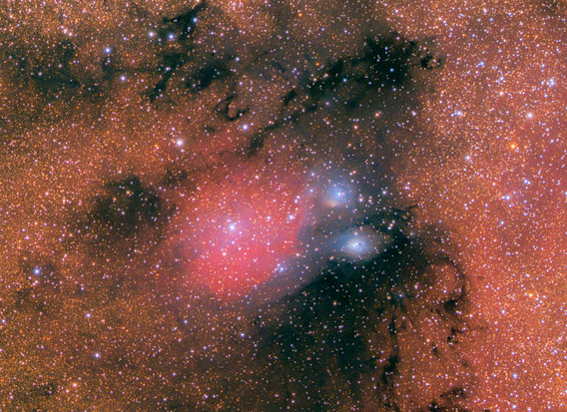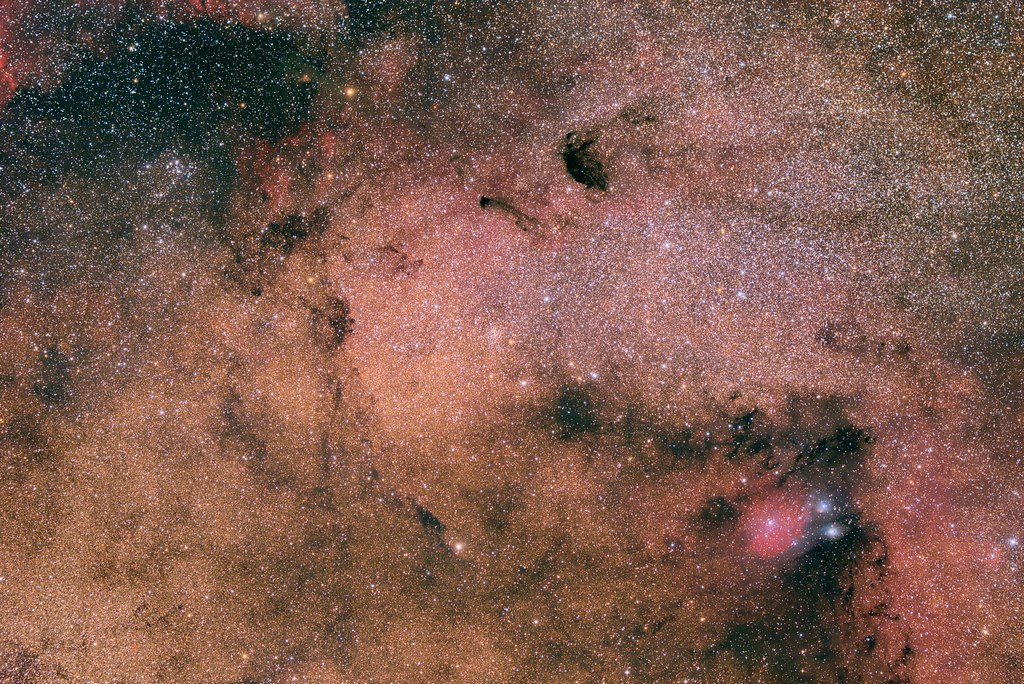Since there were many nights with high cirrus clouds when I was on my astrotrip to Kiripotib, I deviated from my prepared plan and chose some star clusters to photograph. By the way, it was amazing and remarkable how good the nights still were even with that haze in the sky. Since there is no light pollution, you can’t really see the thin haze other than the ‘feeling’ it was less transparant as it could be. This only became really apparent when there were some really clear nights again; now we could see how the sky should have looked the previous days and realised what we missed out on 😉
But still this gave me quite some interesting images, like this one of M24 and surroundings.
M24 Sagittarius star window
This star cloud is a very interesting object, since it is not really a single object like a star cluster. Instead, it is a ‘hole’ in the dust of the Milky Way arm that allows us to see all the way to the Sagittarius arm. The stars in this cloud are just all the stars we can see in this direction in the line of sight.
Barnard 92 and Barnard 93

In the image we can see two lovely dark clouds. These are Barnard 92 and Barnard 93. The bigger one is Barnard 92.
I love these dark clouds, especially if they contain subtle ‘flows’ which always remind me of ink in water
IC 1284 and VdB 118 and VdB 119
This area is a very interesting and beautiful mixture of emission nebula (IC 1284), reflection nebulae (VdB 118 (upper) and VdB 119 (lower).

The blue and red colors almost seem to flow over into each other and so it seems the reflection nebulae and emission nebula are close together and interacting. However, they are situated at quite different distances from us so this is merely an optical illusion. In reality they just lie in the same line of sight at distances of 40 light years (VdB 119), 195 light years (VdB 118) and 1400 light years (IC 1284)
The dark nebula is listed as one object as LDN135.
M24 Sagittarius star cloud and surroundings acquisition details
Date: July 4,5 and 6
Location: Kiripotib, Namibia
Optics: APM 107/700 triplet with Riccardi 0.75 reducer
Mount: Fornax 51
Camera: Modified Nikon D600
Guiding: Lacerta MGEN
Exposures: 12x12min ISO200 + 30x8min ISO200

